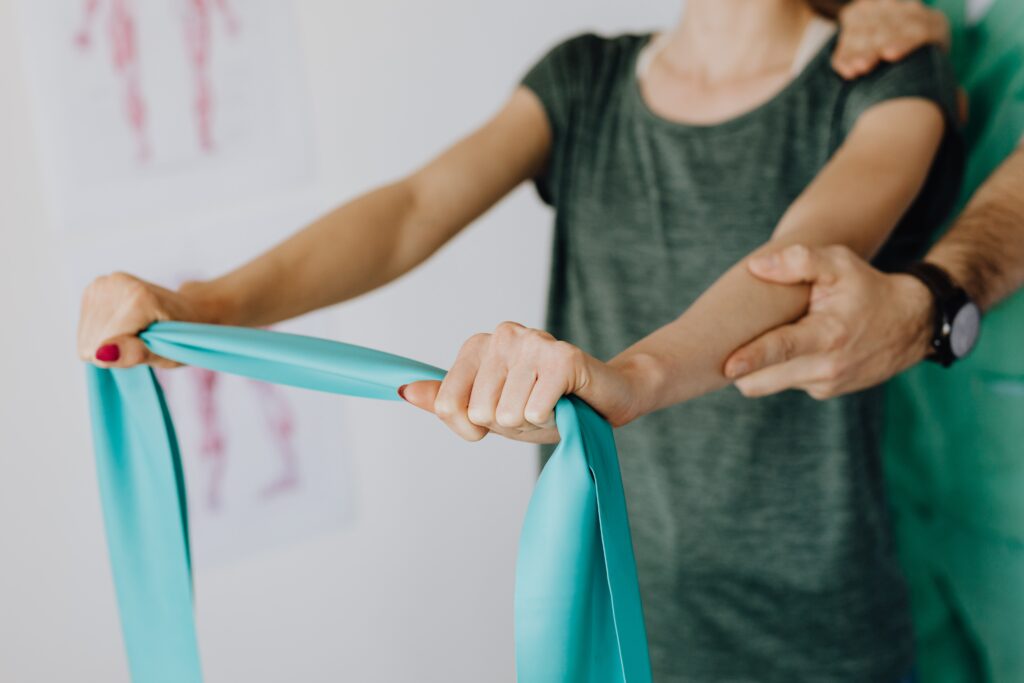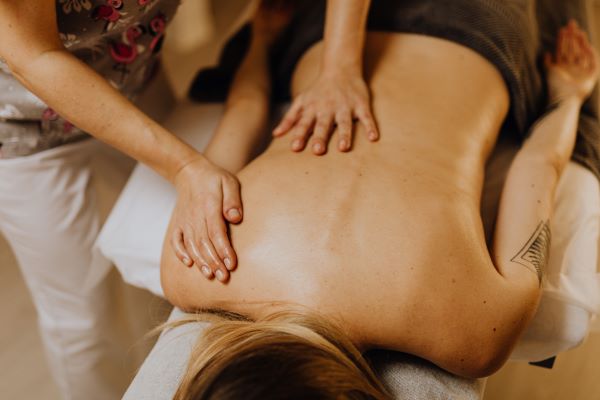
Physical rehabilitation stands as a cornerstone of modern healthcare, offering individuals the opportunity to regain their physical abilities, independence, and quality of life after injury, illness, or surgery. It is a comprehensive and dynamic approach to recovery that combines medical expertise, personalized treatment plans, and dedicated effort from patients. The benefits of physical rehabilitation are multifaceted and encompass physical, emotional, and social aspects, contributing to a holistic path towards wellness.
1. Restoration of Physical Functionality:
One of the primary objectives of physical rehabilitation is to restore and enhance physical functionality. Whether it's recovering from a sports injury, a surgical procedure, or a neurological condition, rehabilitation helps patients regain strength, flexibility, coordination, and mobility. Through a combination of exercises, manual therapies, and other techniques, individuals can regain control over their bodies, reduce pain, and improve their overall physical capabilities.
2. Pain Management:
Chronic pain can significantly diminish one's quality of life and hamper day-to-day activities. Physical rehabilitation employs various methods to address and manage pain. Therapeutic exercises, manual techniques, modalities like heat and cold therapy, and electrotherapy can all contribute to reducing pain levels. By targeting the root causes of pain and teaching patients how to manage it, rehabilitation offers a drug-free approach to pain relief.
3. Prevention of Permanent Disabilities:
In many cases, early intervention through physical rehabilitation can prevent or minimize the development of permanent disabilities. For instance, after a stroke, timely rehabilitation can aid in restoring lost motor functions and preventing long-term physical impairments. Similarly, individuals recovering from orthopedic surgeries, such as joint replacements, can benefit from rehabilitation to ensure proper healing and prevent complications.
4. Improved Mental Well-being:
Physical health and mental well-being are closely interconnected. Coping with a physical injury or illness can lead to stress, anxiety, and depression. Physical rehabilitation not only addresses the physical aspect but also considers the emotional and psychological needs of patients. The achievement of small milestones and gradual improvements in physical abilities can boost self-confidence, elevate mood, and provide a sense of accomplishment.
5. Enhanced Independence and Quality of Life:
Loss of independence due to physical limitations can be challenging to deal with. Physical rehabilitation empowers individuals to regain their independence by focusing on activities of daily living. Whether it's being able to walk without assistance, dress oneself, or perform household chores, these achievements significantly contribute to an improved quality of life.
6. Individualized Care:
Physical rehabilitation is not a one-size-fits-all approach. Each patient's condition and needs are unique, and rehabilitation programs are tailored accordingly. This personalized care ensures that treatment plans address specific goals and challenges, leading to more effective outcomes. Therapists work closely with patients to set achievable targets and adjust the treatment regimen as progress is made.
7. Promoting Long-Term Health:
Rehabilitation goes beyond immediate recovery. The techniques and knowledge acquired during rehabilitation can be integrated into long-term lifestyle changes that promote overall health and prevent future injuries. Patients learn about proper body mechanics, exercise routines, and self-care strategies that can contribute to maintaining their physical well-being in the years ahead.
8. Supportive Environment:
Engaging in physical rehabilitation often exposes individuals to a supportive and motivating environment. Interacting with healthcare professionals who understand their challenges and progress can foster a sense of belonging. Additionally, participating in group therapy sessions or support groups can help patients connect with others who are on similar journeys, offering emotional support and a platform to share experiences.
9. Faster Return to Daily Activities:
Whether it's returning to work, participating in hobbies, or enjoying time with family, physical rehabilitation aims to expedite the process of returning to normal life. By targeting specific functional goals, rehabilitation helps individuals regain the skills they need to participate fully in their daily activities.
10. Cost-Effectiveness:
Investing in physical rehabilitation can yield long-term cost savings for individuals and healthcare systems. By promoting faster recovery and reducing the risk of complications or re-injury, rehabilitation can potentially decrease the need for extensive medical interventions and hospitalizations.
In conclusion, physical rehabilitation is a transformative journey that holds numerous benefits for individuals seeking to recover from injuries, surgeries, or medical conditions. It encompasses not only physical healing but also mental and emotional well-being, fostering independence, confidence, and an improved quality of life. As healthcare continues to evolve, the significance of physical rehabilitation in restoring health and hope remains unparalleled.

I read a lot of health-related information, listen to health podcasts while I work out with most of my content coming from Dave Asprey’s podcast Bulletproof radio and his books. I appreciate his content so much because its all so well-researched and very cutting-edge and he’s not afraid to bring up important topics that are taboo in the main stream medical community. A topic that I feel is overlooked is the effects of “junk” light on our bodies.
When reading one of Dave’s books a few years ago entitled “Head Strong,” he called artificial light “junk light” similar to the bad effects of eating junk food! Each day we wake up and take light for granted, not thinking about how different spectrums of light positively or negatively affect us. Take for instance fluorescent lighting (which I am exposed to on a daily basis) is a form of junk light that leaves us drained over the course of the day. The mitochondria (the powerhouses in our cells that produce energy) in our eyes account for up to 15% of our bodies' energy. By filtering that junk light we could potentially gain 15% more energy in the day! Crazy!
Another form of junk light is blue light. Blue light isn’t always bad but we should avoid blue light exposure in the evenings as it messes with our sleep by reducing the production of melatonin, our sleep hormone. That’s why everyone should be using night shift mode at least 2 hours before bedtime on your phones, PCs, and other electronic devices. Another way to block blue light in the evenings is to purchase blue light and junk light blocking glasses. I’ve purchased these from a company called TruDark, which is a bit expensive. But Amazon has many other less-expensive glasses from a variety of vendors. Dave sums up the damaging effects of blue light on our bodies by saying “Blue light is the high-fructose corn syrup of lighting.”
Here’s a rundown of the negative effects of junk light:
How to avoid junk light:

Isaiah 40:31 “but those who hope in the Lord will renew their strength. They will soar on wings like eagles; they will run and not grow weary, they will walk and not be faint.”
When we feel that God has stopped listening to us and it feels like He has turned away from us, it is in those times, in deep physical pain and emotional sorrow, that we have a choice to either turn toward God and trust Him or to turn away from Him.
Many of you are waiting on God. Waiting on God for physical healing, spiritual healing, finding a job, emotional healing and the list goes on. I personally waited on God for physical healing for over 7 years, suffering from chronic pain. So many times I cried out to God and asked “why haven’t you healed me.” But through my suffering and pain God was asking me to trust Him. To trust Him with my pain, my family, my practice, my finances, and ultimately my life. As the verse states “hope is found in the Lord, He will renew my strength,” He will renew your strength and we will soar. I encourage you wherever you’re at to stop asking God “why” you are in pain but to start asking God “what” is your plan for my life in the midst of the storm, what do you want to teach me?
A prayer that I held onto from Timothy Keller’s book “Walking with God Through Pain and Suffering, was “God teach me how to apply my pain and suffering to my heart, life, and experience it in such a way that is produces wisdom, endurance, joy, self-knowledge, courage, and humility. Help me to not become bitter, cynical, despondent, angry, broken, but help me become more wise, grounded, humble, strong, and even content. It is one thing to believe in You but quite another thing to TRUST You. Help me to trust you in all areas of my life.”
Please realize this is not easy to do. But remember this life is short and we have eternity waiting for us without pain, without suffering, without depression, without agony. The choice is yours, what are you doing to do with it? Remember Paul’s thorn in his flesh in the New Testament and God responded by saying “my grace is sufficient.” Are you only going to love God through the good times or also through the really, really tough times? God’s grace is sufficient. Amen.

It seems that kale has been labeled the new “superfood” for the last decade. After all, it’s a green veggie so it has to be good for you, right? It’s loaded with vitamins A, K, antioxidants, flavonoids, and a host of other vital nutrients to help you feel your best. But according to Dave Asprey, author and creator of the bulletproof coffee and podcast, he says it also has a dark side:
“Kale naturally has oxalic acid in it to protect it from animals, insects, and fungi. Oxalic acid is a toxin made from a mixture of fungus and yeast, and can cause lots of problems, such as gout, kidney stones, and muscle pains.”
Wow, bummer!! This message is definitely not getting to the general public. He goes on to say ”oxalic acid crystals can form anywhere in your body when oxalic acid binds to calcium to form crystals, causing muscle pain. It’s very similar to the way uric acid crystals form in joints in cases of gout. I suspect that many people with diagnosed gout, especially at a young age, also have oxalic acid problems. Oxalic acid also causes most kidney stones when it binds to calcium in the kidney. Low-grade fungal infections happen quite often in relatively healthy people, and they increase your oxalic acid burden.”
Gout and kidney stones should be enough reasons to stay away from kale, but fungal infections are even worse. In my practice, I suspect that the majority of my patients, and general public struggle with unknown fungal infections like candida, especially with all the processed foods and sugar that we consume in the U.S. And candida infections disrupt your gut leaving you fatigued, mentally drained with brain fog, and causing muscle and joint soreness, just to name few side effects.
But if you can’t live without your kale smoothies you can mix calcium and magnesium in your blender.These minerals bind to the oxalic acid so you don’t absorb as much of it, while still getting the benefits from kale. In general, I recommend against taking this “superfood” as the benefits do not outweigh the risks.
Recently I saw a patient, that I’ll name Ben, who came into my office with intense lower back pain for over a year and with overall moderate joint pain that limited his ability to fully exercise, especially in regards to going on long bike rides which he really enjoys. When asked about his diet, his spouse mentioned they were eating very healthy starting each morning with a “kale smoothie.” Along with chiropractic treatments for his lower back pain I had him stop putting kale in his smoothies and instead use other greens like spinach and arugula. Their smoothie was a fantastic way to start a day energized but the kale had to go. Within 3 weeks Ben’s lower back pain had fully resolved along with his moderate joint pain.
I personally start out each morning juicing cucumbers, carrots, green apples, and sometimes spinach. But be careful what you juice, as all vegetables are definitely NOT created equal!

Introduction:
Proper nutrition is essential for optimal health and well-being. However, various factors can hinder the body's ability to absorb nutrients effectively, leading to deficiencies and imbalances. In the field of integrative medicine, IV therapy has emerged as a powerful tool to enhance nutrient absorption. In this blog post, we will explore how IV therapy can nourish the body from within, bypassing digestive limitations and delivering essential nutrients directly into the bloodstream.
Understanding Nutrient Absorption Challenges:
The digestive system plays a crucial role in breaking down food and extracting nutrients for absorption. However, factors such as poor gut health, digestive disorders, or medication use can impair nutrient absorption. Additionally, certain individuals may have compromised digestive systems that struggle to absorb nutrients efficiently. This can result in deficiencies, even when a balanced diet is maintained. IV therapy offers a solution by bypassing the digestive system and delivering nutrients directly into the bloodstream, maximizing absorption and addressing nutritional gaps effectively.
Direct Delivery of Essential Nutrients:
IV therapy involves the administration of a customized blend of vitamins, minerals, antioxidants, and other essential nutrients intravenously. By bypassing the digestive system, these nutrients are delivered directly into the bloodstream, allowing for immediate and maximum absorption. This direct delivery method ensures that nutrients are readily available for cellular use, promoting optimal functioning and nourishment of the body.
Enhanced Bioavailability:
The bioavailability of nutrients refers to the body's ability to absorb and utilize them effectively. With oral supplementation, nutrients must pass through the digestive system, where they may encounter challenges such as low absorption rates or breakdown during digestion. IV therapy bypasses these obstacles, providing a higher bioavailability of nutrients. This means that a greater percentage of the nutrients infused through IV therapy can be utilized by the body compared to oral supplementation alone.
Tailored to Individual Needs:
One of the key strengths of IV therapy in integrative medicine is its ability to be tailored to individual needs. Each person has unique nutritional requirements, and IV therapy allows for customized blends of nutrients to be administered based on specific deficiencies or health goals. Integrative healthcare professionals can conduct comprehensive assessments to determine the ideal combination of nutrients for each individual, ensuring that the therapy is personalized and optimized for their specific needs.
Improved Energy and Vitality:
When the body receives an infusion of essential nutrients through IV therapy, it can experience a boost in energy levels and overall vitality. The direct delivery of nutrients supports cellular function, which is essential for optimal energy production. Individuals who undergo IV therapy often report increased energy, improved mental clarity, and a general sense of well-being. This enhanced vitality can have a positive impact on daily activities, productivity, and overall quality of life.
Complementary to a Healthy Lifestyle:
While IV therapy provides a powerful boost of essential nutrients, it is important to note that it is not a substitute for a healthy diet and lifestyle. Rather, IV therapy acts as a complementary tool to support and enhance overall well-being. Integrative healthcare professionals often recommend IV therapy alongside dietary changes, exercise, stress management techniques, and other lifestyle modifications to create a comprehensive approach to health and wellness.
Conclusion:
IV therapy offers a valuable solution for individuals seeking to enhance nutrient absorption and optimize their overall health. By bypassing digestive limitations and delivering essential nutrients directly into the bloodstream, IV therapy can effectively nourish the body from within. With its tailored approach, enhanced bioavailability, and potential for improved energy and vitality, IV therapy has become an integral component of integrative medicine. Consult with a qualified healthcare professional to explore how IV therapy can complement your holistic approach to wellness and help you nourish your body from within.

Introduction:
When it comes to rehabilitation, incorporating various therapies and techniques can significantly enhance the recovery process. One valuable tool in this journey is medical massage therapy. As an essential component of integrative medicine, medical massage therapy offers a holistic approach to rehabilitation. In this blog post, we will explore the benefits of medical massage therapy in enhancing rehabilitation and how it complements other treatment modalities within an integrative framework.
Promoting Circulation and Healing:
Medical massage therapy can effectively improve circulation, which is crucial for the healing process. By using targeted techniques and gentle strokes, massage therapists can increase blood flow to injured areas, promoting the delivery of oxygen and nutrients while removing waste products. This enhanced circulation aids in tissue repair, reduces inflammation, and accelerates healing, ultimately supporting the rehabilitation process.
Relieving Pain and Reducing Muscle Tension:
Pain is a common obstacle in rehabilitation, often hindering progress. Medical massage therapy can help alleviate pain by targeting tense and overactive muscles. Through specialized techniques, such as deep tissue massage and trigger point therapy, massage therapists can release muscle tension, decrease muscle spasms, and reduce pain. This pain relief not only enhances the rehabilitation experience but also allows individuals to engage more fully in other therapeutic interventions.
Improving Range of Motion and Flexibility:
Limited range of motion and flexibility can impede rehabilitation progress. Medical massage therapy plays a crucial role in addressing these issues. By targeting tight muscles and connective tissues, massage therapists can release restrictions, increase flexibility, and improve joint mobility. This improved range of motion enables individuals to perform rehabilitation exercises more effectively and promotes overall functional recovery.
Enhancing Relaxation and Stress Reduction:
Rehabilitation can be a physically and emotionally demanding process. Medical massage therapy offers a calming and relaxing experience, helping individuals manage stress and anxiety. Through the release of endorphins, the body's natural "feel-good" hormones, massage therapy promotes relaxation and an overall sense of well-being. This state of relaxation not only supports the healing process but also enhances the receptiveness to other rehabilitation interventions.
Supporting Emotional Well-being:
Rehabilitation often involves emotional challenges as individuals cope with the physical limitations and adjustments they face. Medical massage therapy provides a safe and supportive environment where individuals can express their emotions and find comfort. The therapeutic touch of a massage therapist fosters a sense of trust and connection, offering emotional support throughout the rehabilitation journey.
Integrating with Other Modalities:
One of the strengths of medical massage therapy lies in its ability to integrate seamlessly with other treatment modalities within the realm of integrative medicine. By combining massage therapy with other rehabilitation approaches, such as physical therapy, chiropractic care, and acupuncture, individuals can experience a synergistic effect that optimizes their overall recovery. This integrative perspective allows for a comprehensive and personalized approach tailored to individual needs.
Conclusion:
In the realm of rehabilitation, medical massage therapy offers numerous benefits that enhance the recovery process. From promoting circulation and reducing pain to improving range of motion and supporting emotional well-being, medical massage therapy provides a holistic approach to rehabilitation. By integrating medical massage therapy into the larger framework of integrative medicine, individuals can experience enhanced outcomes and a more comprehensive approach to their rehabilitation journey. Consult with a qualified medical massage therapist to explore how this integrative modality can contribute to your rehabilitation and overall well-being.
